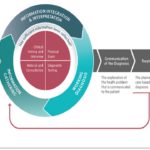A rapid diagnosis of aHUS in 7 days or less usually results in the patient having the best of health outcomes on recovery.
Most aHUS patients do not enjoy such diagnosis excellence and experience worse outcomes becoming more catastrophic as the diagnosis timeline grows.
So what could help more of the potential new patients to come get diagnosed rapidly?
To achieve an aHUS diagnosis within 7 days of symptom onset, several key steps and protocols would need to be in place to expedite testing and narrow down the diagnosis:
Foremost is more awareness among Doctors.
It is vital that doctors in emergency rooms, primary care, and pediatric settings are trained to recognise the early signs of a TMA and aHUS — particularly the triad of microangiopathic hemolytic anemia, thrombocytopenia, and acute kidney injury.
It is important they know about specific triggers of aHUS, such as infections, pregnancy, or genetic predisposition in a family, and raise awareness that aHUS can occur without these factors as well. aHUS can happen equally at any time of year unlike typical HUS which peaks in the summer months.
Once an aHUS TMA is suspected it helps if hospital could establish protocols to assess for aHUS whenever a patient, especially a child, presents with symptoms suggesting hemolytic uremic syndrome (HUS) but without an infection (like E. coli).
Standard lab measures should be performed quickly, including complete blood count, lactate dehydrogenase (LDH), creatinine, and urinalysis to detect kidney function, hemolysis, and low platelet count.
Next there is the testing for signs of complement over action . Laboratories should prioritise complement activity tests (such as CH50 or C3, C4 levels) and then consider urgent tests for complement gene mutations when aHUS is suspected. Although waiting for results does not mean that complement inhibition treatment should not be started, hospitals with genetics departments can expedite genetic testing in suspected cases, potentially within 48–72 hours.
A focus on expedited genetic screening, even with initial targeted panels, can confirm the diagnosis early on. Not all aHUS patients have identifiable predisposing genetic variants but can still benefit from inhibitor treatment.
A care pathway across multi disciplines can also help the lead treating doctor. Including likely more experienced nephrologists or haematologists as soon as possible.
If specialized genetic testing centres are needed such as those offering complement activity panels, arranging pre- established direct pathways for their services for expedited processing can reduce wait times for results.
In situations where aHUS is strongly suspected, and immediate diagnosis confirmation is not possible, doctors may begin treatment with eculizumab, a complement inhibitor, including eculizumab biosimilars where approved for aHUS in some countries.. This not only can prevent rapid deterioration but also serves as a diagnostic indicator — if the patient responds well -it’s a strong confirmation of aHUS. Given when needed is not a waste and when it is no longer needed it can be stopped.
So what would it take to ensure a rapid 7 day diagnosis of aHUS ?
Day 1-2 after patient presents with a suspected TMA Immediate blood tests, urine tests, and signs of hemolysis and thrombocytopenia identified. Complement activity and possible genetic tests are ordered.
• Day 3-5: Rapid consultation with nephrology/hematology; initiation of treatment (such as eculizumab) if now highly suspicious of aHUS.
• Day 6-7: Results from complement and genetic testing arrive, confirming the diagnosis.
By enhancing early recognition, speeding up access to specialized tests, and creating a streamlined pathway for suspected aHUS cases, it’s possible to significantly shorten the time to diagnosis to get the best of health outcomes for patients.
The aHUS Alliance Global Action has focused on improving awareness, diagnosis, and treatment of aHUS throughout its existence. It has taken several steps to advocate for a rapid diagnosis of aHUS within a 7 day timeframe. Its efforts focus on raising awareness, advocating for better diagnostic pathways, including the establishment of formal multidisciplinary team approaches.
Global Action’s study of the aHUS diagnosis process is the biggest and most in-depth survey of real world experience and perception by patients of what happens when diagnosed. The four reports by Global Action on the steps in the process and the significance of the key factors impacted on the process timeline can be accessed in the link below.

An aHUS diagnosis, lucky or what?
It is hard to believe that it will soon be two years since the aHUS Diagnosis Process project began. It began when a parent of an aHUS patient contacted Global…
Article No. 696

